United World International expert Dr. Mehmet Perincek has been in the conflict area in Ukraine, where Russia’s military operation took place, between April 29th and May 1st, at the invitation of the Russian Defense Ministry. We are continuing the journal series about Perincek’s trip. This article will be followed by the fourth and last part with observations from the conflict area.
We leave for the city of Berdyansk, early in the morning on April 30th. Berdyansk is not a part of the territory of the Donetsk People’s Republic. It is located in the Zaporizhzhia Oblast. There was no armed conflict in the city; it seems that Russian forces have taken control of the city without encountering any armed resistance. Hence there is no destruction throughout the city. City life is much more alive compared to Mariupol.
“Russophobia was engraved in children’s minds in schools”
We first meet with the interim mayor of the city, Aleksander Salenko, in Berdyansk. Salenko’s is an engineer. When the former administration fled the city, he took things in his own hands, considering that “the city should not be left completely unattended”. Salenko tells us:
“As you can see, our city is peaceful and the city life is alive. Cafes and restaurants are still serving. The previous police department still continues its duty. There have not been any terror attacks, violent explosions etc. We are currently in a transition period. Our city had a population of around 100 thousand. There were some who fled the city. Those fleeing have not only crossed to the Ukrainian side, but also went to Crimea. Our population is now around 60-70 thousand. Nearly 10,000 people from active combat zones are coming here as well. Among them, returns to Mariupol have also begun. And we do not prevent those who wish to go to the Ukrainian side.
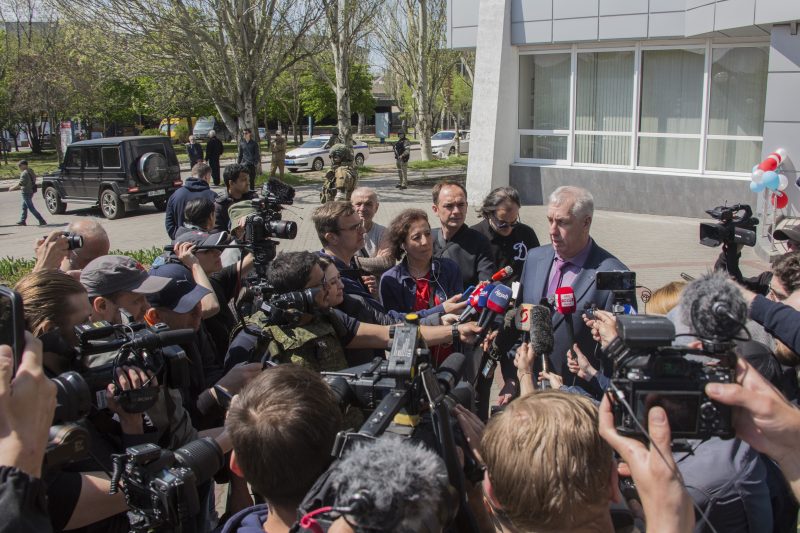
The people here have always spoken Russian. But Russian language has ceased to be one of the official languages. But the people never stopped speaking it on the streets. Pressure has been put on us for the last 8 years. Children were taught anti-Russian sentiment in school, and were taught to hate their neighbours.
We will now start to pay salaries in Rubles. But the Hryvnia will also continue to be accepted in daily life. Some of the former municipal staff are boycotting and not coming to work. Therefore we are restructuring the city administration.
Switching to Rubles does not mean that we are joining Russia. According to the developments in Ukraine, the people of the city will also make their own decision. The majority of the population is glad that the Russian Army arrived.”
The fate of the regions on which Russia established control
This last issue is really important. What will be the fate of the regions that went under the control of the Russian Army? I discussed this issue with locals and Russian officials everywhere I went. The answers I get are more or less the same. Firstly; this issue is not a priority for now. The main task now is to ensure security in cities and to rebuild social-economic life. Because the people do not want to leave their home; they are determined to stay in their own homelands. Later, they will see how the course of the events and the developments in Ukraine evolve. And in the end, the people will make the decision, not Putin or the Russian Army. They basically have 4 options:
1. Joining Russia.
2. To declare their independence, like Donetsk and Lugansk People’s Republics.
3. To establish a new Ukrainian state by merging with other regions that broke away from Ukraine. Just like the North-South Korea system.
4. And to establish an autonomous region within a federative Ukraine if a reasonable administration is formed in Ukraine.
The first option seems to be the most likely, and the second one to be the least likely. But the current transition period appears to indicate a process where they are more likely to act as an independent state. But it’s definitely temporary. Options three and four, as always emphasised, “depend on the future developments”.
At the wedding ceremony
After meeting with the head of the city in Berdyansk, we all go to the marriage registry office. We are about to witness the first wedding ceremony since the Russian operation began.
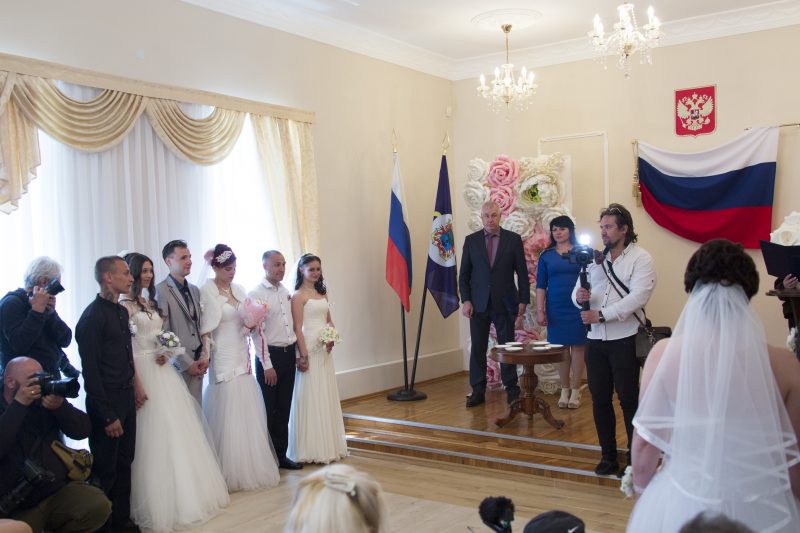
The first wedding ceremony in Berdiansk since the military operation.
The wedding of six couples suddenly turns into an international meeting. The mayor of the city does not miss the occasion to hold a speech on the wedding ceremony. He complains that the Kiev regime carried away municipal and administrative records or destroyed them, also trying to block administrative works. These marriages are now not being registered in Ukrainian records. They are instead formalised with the seal of the new Berdyansk municipal administration.
Of course, the issue here is not a simple wedding ceremony. This is just one of the most important indicators of the return back to normal life and looking at the future with hope.
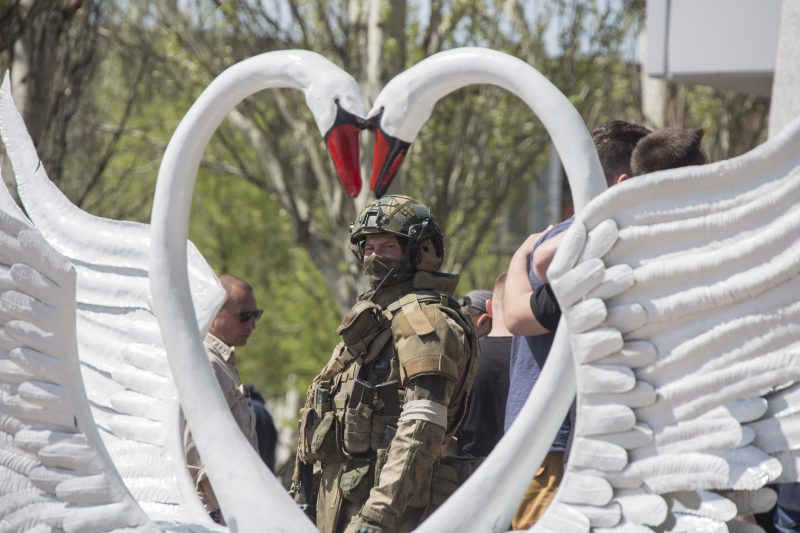
The hype of “the grandma with the Soviet flag”
From the wedding ceremony, we leave for the place where the mural “Grandma with the Soviet flag” was painted. This “Grandma with the Soviet flag” became one of the most significant symbols of the Russian operation in Ukraine.
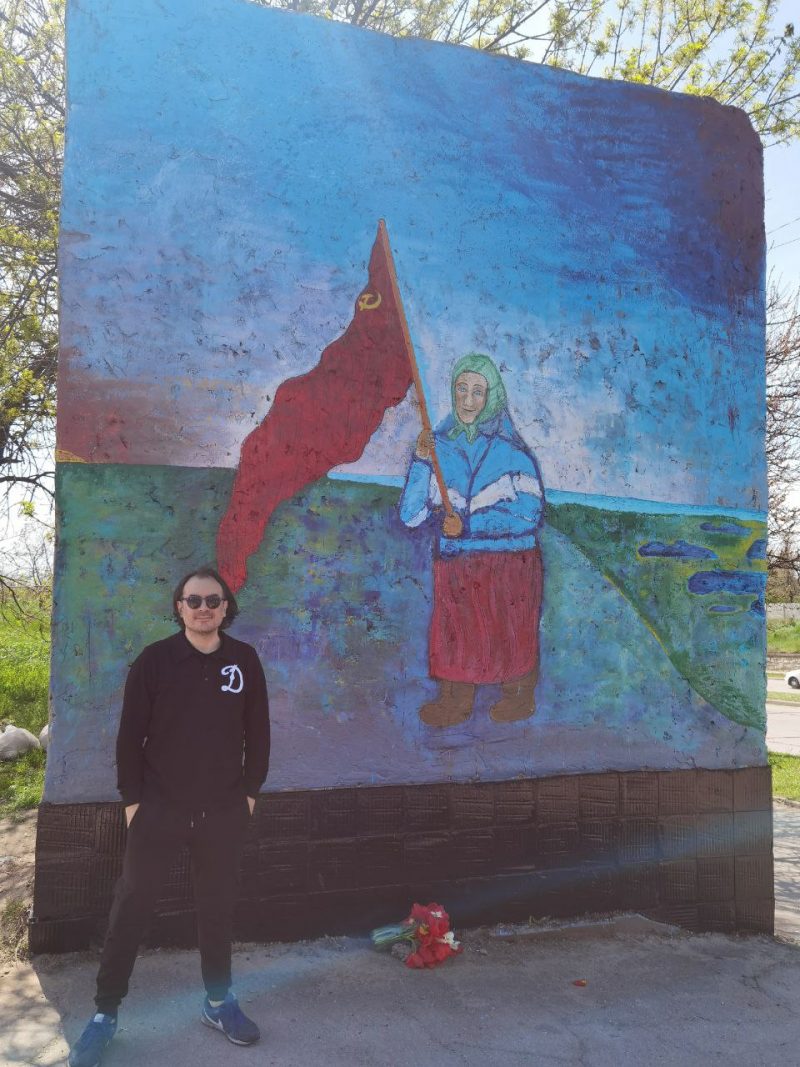
The story goes like this: When the Ukrainian troops entered a village, an old lady thought it was Russian army and came up to them with a USSR flag she had in her house. Ukrainian soldiers recorded all these on their phones and made a mockery of the lady. When they were supposedly giving her food supplies, they took the flag away from the grandma’s hands and crushed it. And when the grandma realized that they were Ukrainian troops, she returned the supplies she had taken and reacted to the stepping over the Soviet flag with these words: “My ancestors fought for that flag, and you are stepping on it, give me the flag back!” Then, that grandma tried for a long time to take back the flag which the Ukrainian troops had stepped on.
This video, which those Ukrainian soldiers uploaded on the social media to mock her, soon became a trend all over Russia. Paintings of the anonymous “Grandma with the Soviet flag” began to appear everywhere. In the paintings, the shadow of the woman was drawn to look like the famous “Motherland Calls” statue in Stalingrad. Now we can see the “Grandma with the Soviet Flag” in many cities around Russia. There was even a talk of liberating that area from Ukrainians and bringing the grandma to the military parade in Red Square on May 9th Victory Day.
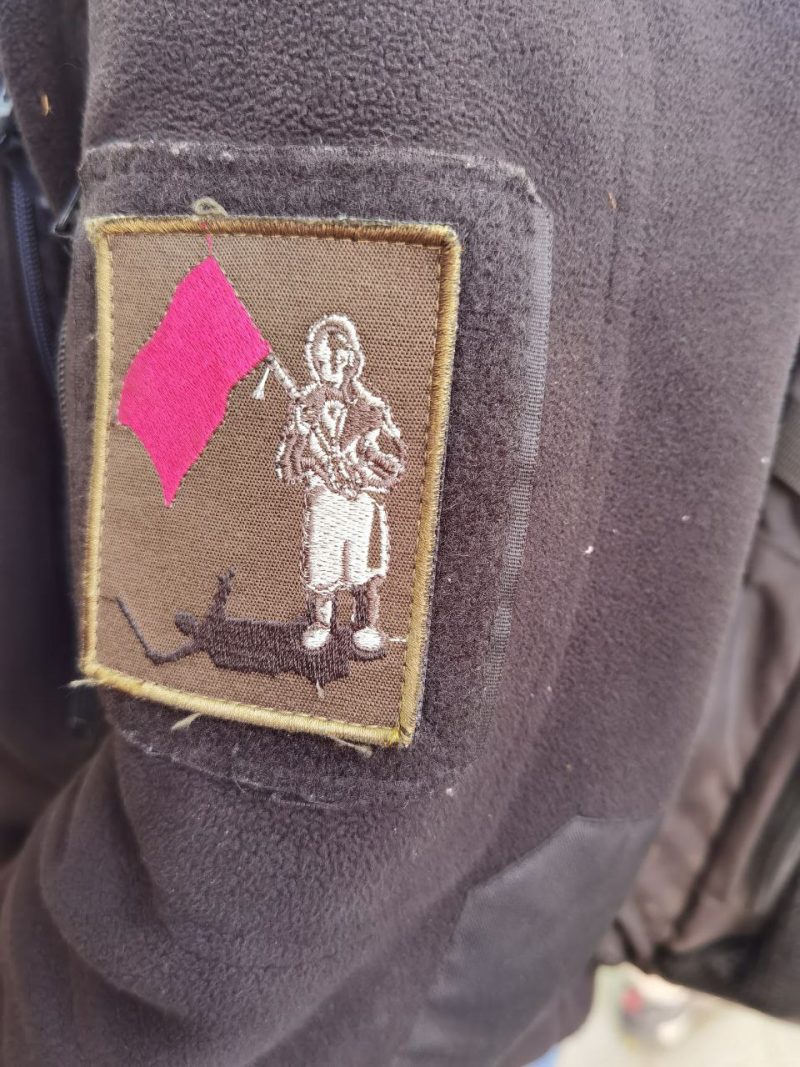
The Grandma is, of course, very famous in the operational zone as well. Mariupol’s interim mayor announced that her statue would be erected in the city. You also often see that the Russian soldiers wearing arm patch stickers with that grandma picture on it on their uniforms. And the mural you see below was also made in Berdyansk.
Humanitarian aid accompanied by WW II anthems
Right next to that mural “Grandma with the Soviet Flag”, humanitarian aid and supplies from Russia are being distributed to the civilians. And a Russian military vehicle plays the most famous Soviet anthems of the World War II period with loudspeakers. The emphasis of the Soviet front of the World War II, or as the Russians/Soviets call it, the Great Patriotic War and the emphasis on victory over fascism, make up the primary narrative of Russia’s military campaign over Ukraine. The historical references and propaganda tools always refer to that theme.
May 9 Victory Day was celebrated this year
Meanwhile, we also learn that the May 9 Victory Day celebrations will be held in the city. There will be no parade for security reasons, but a whole number of other events are planned. We should also note here that the celebration of the Victory Day against the fascism was not allowed in the city in previous years.
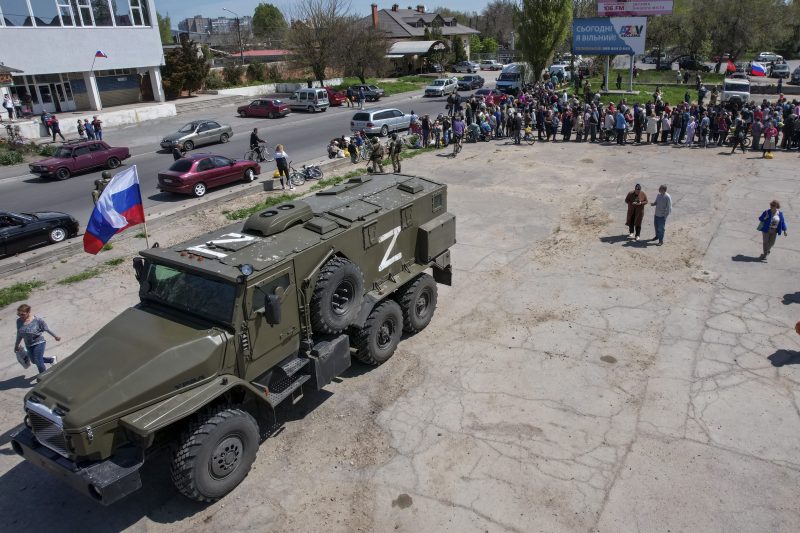
Telecommunications issue
Then we visit a camp where the civilians, who fled Mariupol, are staying temporarily. This was originally built as a pioneer (Soviet scout) camp. During our visit, doctors were examining the camp population. Some of the people are waiting to go to Crimea, others are waiting to return back to Mariupol.
The most important problem is telecommunication, and not only in this camp, but in the whole area of operation. The Ukrainian operators no longer work in many areas. They have stopped providing mobile data service. And it seems to take some time before the Russian telecom systems are established. There are many people who have lost contact of each other, and who have not heard from their families for a long time.
This is one of the things we hear most frequently from the inhabitants of the region: “There was no difference between a Ukrainian and a Russian. We would never separate one from the other. And for us, this is still the same.”
War crimes against the Russian POWs
We leave from Berdyansk towards Energodar. We will spend the evening there, and the next day we will leave for the Zaporozhe Nuclear Power Plant. This is the plant that the West has made a constant fuss about, claiming a “second Chernobyl disaster” would take place here.
Again I use the time spent on the road with chatting. Russia has taken as many as 3,000 POWs so far. The prisoners are held in special POW camps. Those who surrender and those who are taken prisoner by force are not treated differently. Among them, there are also some who have requested asylum.
Prisoner exchanges have begun. “We once saw that all the Russian POWs who were returned back, were shot in the foot after being released from camps” says the Russian Defense Ministry official. Some images of such war crimes were also reflected on social media previously.
“The Ukrainian side sometimes publishes on social media images of Russian prisoners, apologizing to the Ukrainians and insulting Russian state and its officials. Are these people be subjected to a prosecution etc.?” I asked. “Absolutely not. It is very clear that they were forced to do this. So we completely understand the situation they are in”, he replied.
When these prisoners are returned, they are immediately sent home to rest.
From the PKK/PYD to the Neo-Nazi Azov Battalion
There is another important issue in regard of POWs. So, what happens when foreign fighters are captured? They are technically prisoners of war, but they are legally outside of the POW status. An exchange may take place in the future, but they will be prosecuted according to the laws of the country they are in.
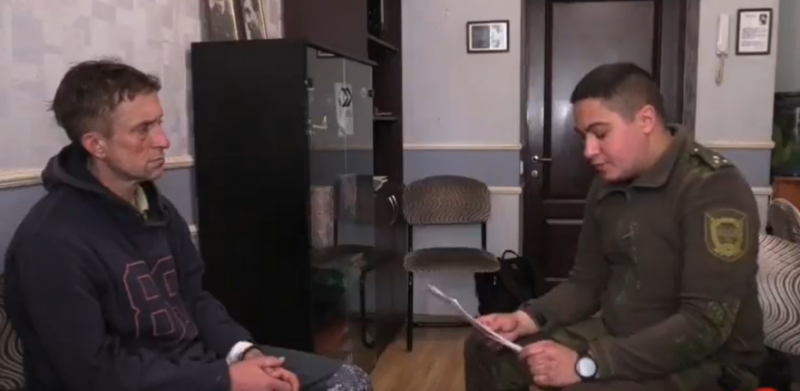
Two of the examples of this are the British volunteers Shaun Pinner and Aiden Aslin. They were taken as “prisoners” while fighting alongside the Azov Battalion in Ukraine. It was also revealed that these two individuals had previously fought in Syria on the side of the PKK/PYD.
These two Brits are currently on trial in the Donetsk People’s Republic. Recently, the prosecutor has had their charges read openly. And the Military Prosecutor’s Office of the Donetsk People’s Republic said in a statement that the death penalty might be possible for the crimes these individuals have committed.
The status of the soldiers captured KIA
I ask what happens to the Ukrainian soldiers who are found dead. They say that all of them are first being identified and buried after the necessary samples are taken from their bodies for identification. For now, they report that the soldiers who lost their lives were sent back to the Ukrainian side, only through the Red Cross. But their relatives will soon be able to come and pick them up from the place where they were buried. And they will also be able to confirm their identities with the samples taken.
The military base established at the nuclear power plant
We spend the night in Energodar. The name of the city literally means “the gift of energy”. There are not only nuclear but also many other types of power plants in the city. The Zaporozhe Nuclear Power Plant, the largest in Europe, was built during the Soviet era. And a huge outcry was produced throughout the Western media when the Russian Army entered the city. It was even reported that the Russians had hit the power plant.
After a careful search with guard dogs, we enter the power plant zone. The plant has six reactors. The Ukrainian forces have also used the power plant as a military base. Again, snipers were placed on the rooftops. But then, they surrendered.
Mehmet Perincek in front of the first reactor of the Zaporozhe Nuclear Power Plant.
The Western lies about the nuclear power plant
The power plant was not damaged at all during the entry of the Russian Army into the city. We have seen that with our own eyes. The plant continues its ordinary operations. The previous employees of the power plant are also still at work. Those who had fled have come back. There is no change in the facility management. Only some experts from the Russian Nuclear Energy Agency (Rosatom) provide technical support. But they do not interfere in the administrative branches.
The power plant still continues to supply energy to the Ukrainian side. The energy needs of all regions under the control of Russia will soon be provided from here. And the new administration established in the city has made electricity free for residential use in Energodar.
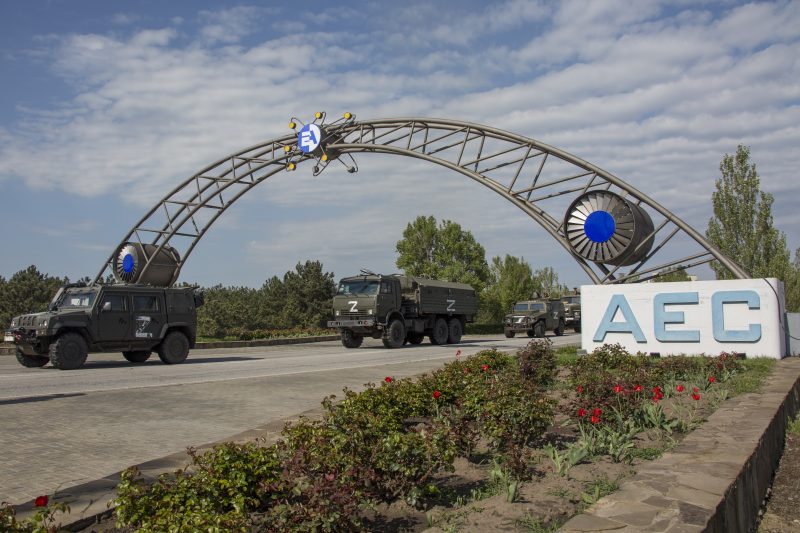
“Let us sell energy to Europe”
We meet with the interim mayor of the city, Andrei Sheichik, who is also a former employee of the power plant. He strongly criticizes the Western campaign of lies. He also says the Ukrainian forces have tried as hard as they can to let something bad happen, but failed. He constantly emphasizes that no damage has been done to the power plant. He also says that they have contacts with the International Atomic Energy Agency, at an ordinary level.
He finally adds that they are ready to sell cheap energy to Europe.
To be continued …





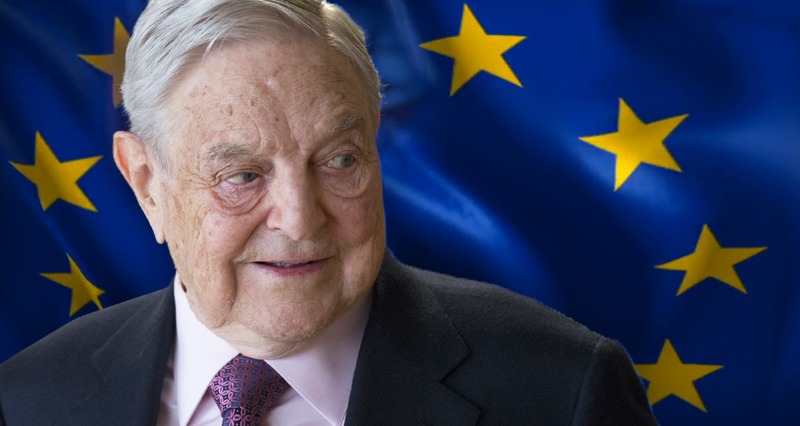


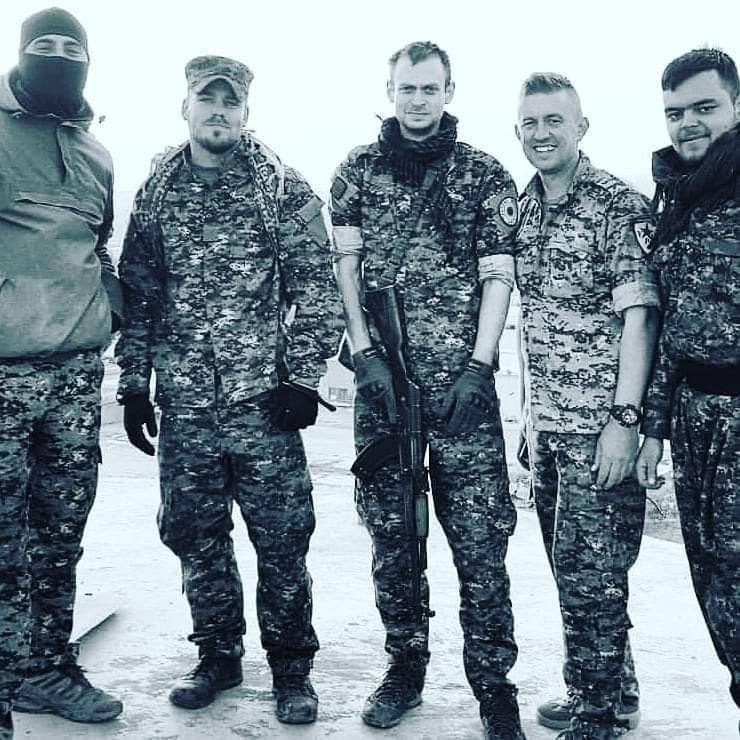
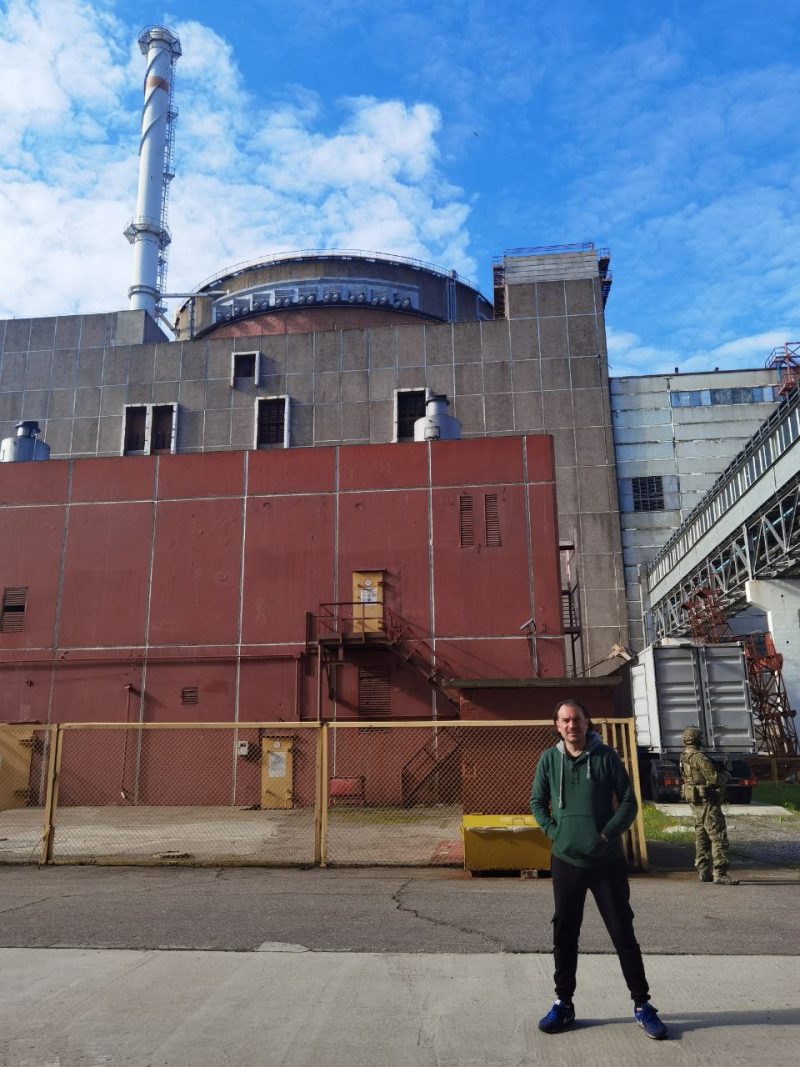

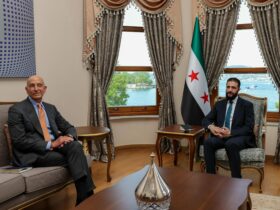
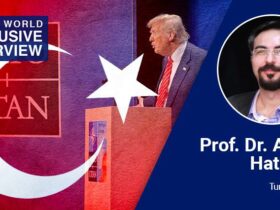
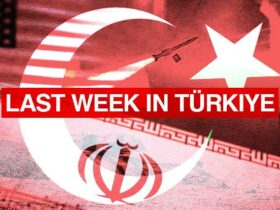
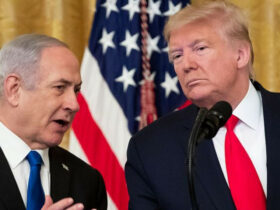
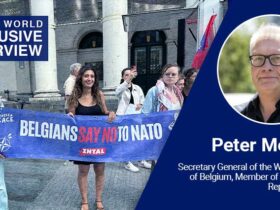
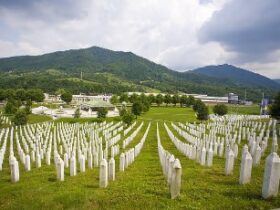
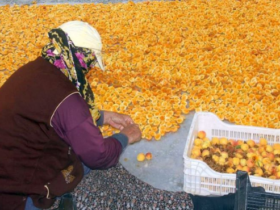

Leave a Reply